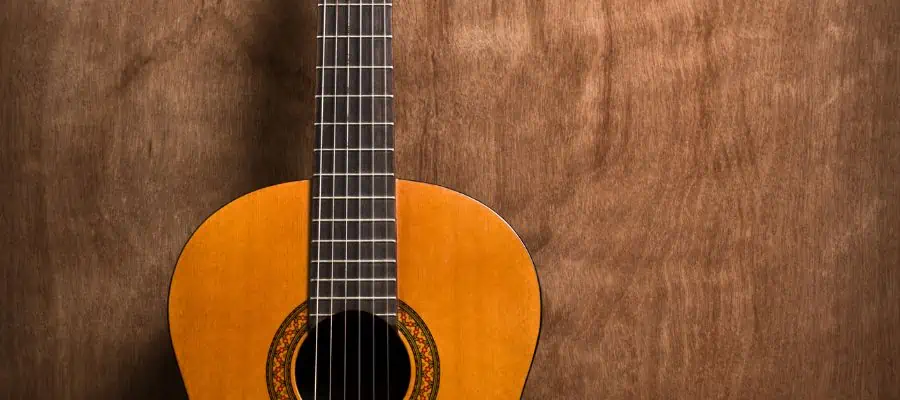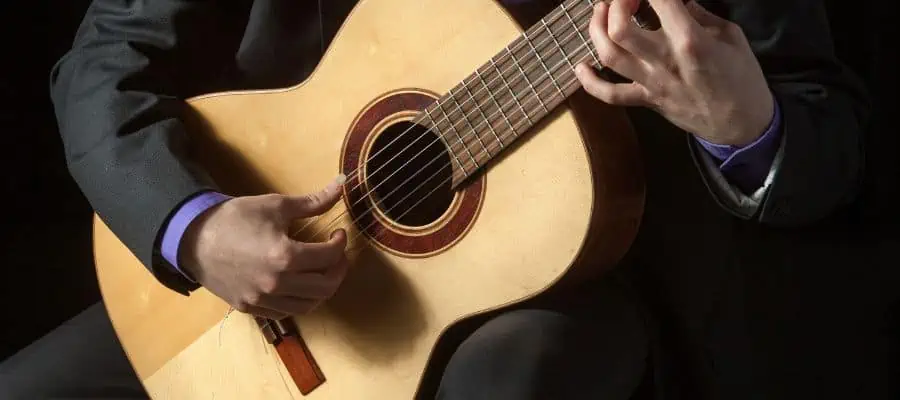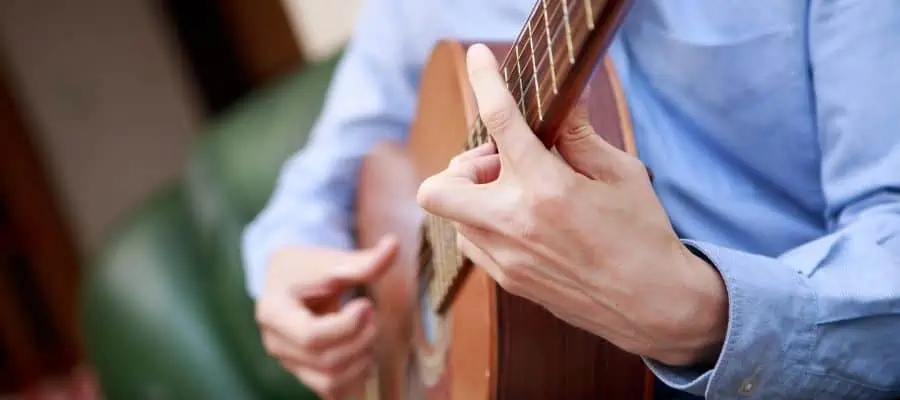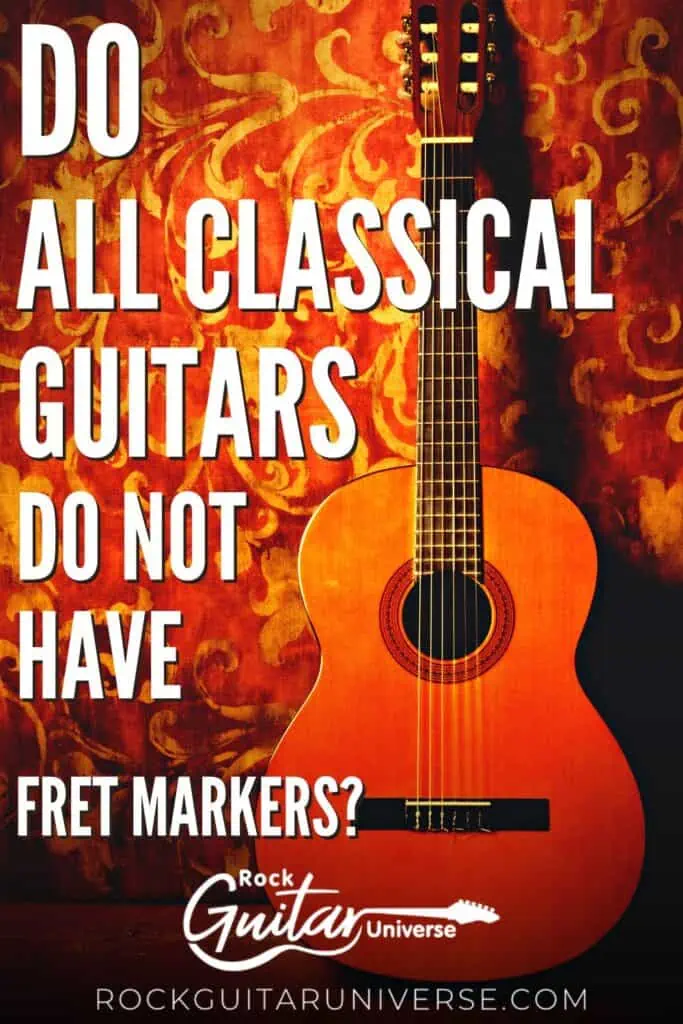Fret markers are handy anchor points for guitarists to navigate through the fretboard. However, not all guitars come with them. Acoustic and electric guitars most often come with markers, most often as dots in the middle or top of the fingerboard, to help guitarists find their way through the neck.
Classical guitars, however, are an exception. Fret markers are not universal for classical guitars as historically, they have often been devoid of them. While there are contemporary variations these days, such as classical guitars with dots on the upper side of the neck of the 7th and 12th frets, traditionally classical guitars come without fret markers.
The main reason behind the lack of fret markers on classical guitars is preserving aesthethics and tradition as well as the very nature of classical instruments that requires reading sheet music.
Today, I will be examining the relationship between fret markers and classical guitars and talk about the history, the reasons, and the actual necessity of fret markers on classical guitars.
Why Don’t Classical Guitars Have Fret Markers?

The two main reasons behind the lack of fret markers on classical guitars are the preservation of tradition and the nature of classical instruments, which requires the player to read sheet music when playing instead of looking at the instrument.
Traditional Design
Historically, classical guitars have always been built without fret markers. The classical guitar is one of the first instruments with metal frets. Before, instead of metal frets, gut-tied loops were being used in instruments like classical guitar. So, there was a big chance that fret markers might not fall into the correct places.
After the metal frets, fret markers could become more stable and help players navigate through the fretboard. However, to preserve the tradition and aesthetics, purists insisted on the unmarked fretboard. The lack of markers is an essential part of the instrument for them as it also forces the players to develop a good sense of the fretboard and muscle memory.
Reading Sheet Music
Classical instruments, such as violin, cello, and classical guitar, require players to read sheet music while playing at the same time. The reliance on sheet music makes looking at the fretboard quite challenging, which makes the fret markers quite pointless.
So, classical guitar playing requires a high sense of finger positioning, muscle memory, finger dexterity, and tactical familiarity on the fingerboard.
Playing Position
Another factor is the classical guitar playing position. As classical guitars have the traditional playing position with the 45-degree angle with the guitar’s headstock at eye level, seeing the fretboard is almost impossible. That is another reason for the unmarked fretboard.
The Role Of Fret Markers
Another purist approach is to avoid fret markers to avoid the dependence on fret markers for fretboard navigation. With the fret markers, players can recognize the fret positions easily for chord and scale changes. However, it creates dependence on the fret markers, leading to mental laziness, which purist classical guitarists argue against.
Are There Some Classical Guitars With Fret Markers?

Today, there are many classical guitars that come with fret markers. They come in different designs with different amounts of fret markers in different positions. These contemporary designs are especially good for beginners as markers serve as helpful visual guides through the fretboard.
For the learning phase, fret markers could be great, but classical guitar players should not build dependence on them and get rid of the markers as soon as they start to feel comfortable with the fretboard navigation.
New classical guitars come with different designs. Some have fret markers just on the 5th position, some on the 5th and the 7th, and some on the 5th, 7th, and 12th. There are also different combinations like the 5th and the 12th or 7th and the 12th. Some Cordoba and Yamaha classical guitars, for example, come with fret markers on the side of the neck.
But you almost never find a classical guitar with fret markers on the front of the fretboard. This is due to the playing position, as with the traditional playing position, you are not able to see the front of the fretboard of a classical guitar. The fret markers will always be on the top side of the neck.
Is it Okay to Add Fret Markers to The Classical Guitar?

If you have a classical guitar without fret markers and are having trouble playing without them, there is always the option to add your own fret markers. You can use liquid paper to put the markers on the topside of the neck to avoid leaving any permanent marks. Later, when you feel comfortable, you can scrape them off.
The strategic positions to put the markers on are the 7th and the 9th frets, as they are the hardest to eyeball without reference. You can also put one on the 5th and the 15th if you still struggle with navigating.
However, remember that this is only a visual guide for a while, and the ultimate goal is to get rid of them by playing solely with muscle memory and a good sense of the fingerboard.
Conclusion
To summarize, classical guitars come without fret markers due to the traditional approach as well as the challenges of reading sheet music and looking at the fretboard at the same time. Also, the playing position makes it hard for players to see the fretboard anyway. Finally, the purist approach dictates that a good classical guitar player must have the full sense of the fretboard and muscle memory to be able to play without visual references.
However, there are many contemporary-design guitars today that come with fret markers on the top side of the neck. There are markers mainly on the 5th, 7th, and 9th frets, or a combination of these with some more dots added depending on the model. But keep in mind that they should be only used for a while until you get comfortable with the fretboard for seamless chord and scale changes.
If you found this article useful, you may want to save this pin below to your Guitar board.

Recent Posts
Some guitarists insist on buying an expensive amplifier with their electric guitar. They assume that this is a must for every type of guitarist out there. However, in some situations, this isn’t...
Top 50 Free Realistic Guitar VST Plugins With Sound Examples
As technology has rapidly advanced in the recent decade, computers are stealing more and more roles from physical musical instruments and accessories. Nowadays, you do not need expensive amps,...

